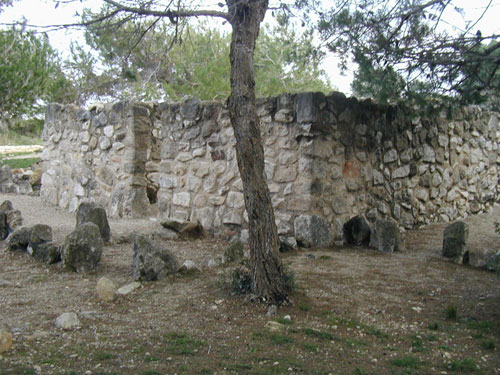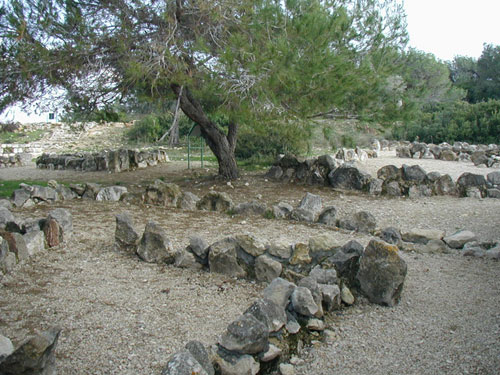Israelite Period (Iron Age), 1000-900 BCE
An Israelite House from Ramat Matred (Negev Highlands)
Israelite Period (Iron Age), 1000-900 BCE
The farmhouse structure is very similar in plan to the four-room house that which characterizes houses built throughout the country during the biblical period. The middle area (room) is an open courtyard (patio), allowing access to the two side rooms flanking it, and to a third area at the back of the house. This back area was probably the main room of the house (bedroom). The side rooms, as well as the outer yards around the house, were used for various tasks dealing with agricultural produce, such as crushing, baking, cooking, weaving, spinning and storing.
Israelite Period (Iron Age), 1000-900 BCE
The dwellings were attached to the Israelite farmhouse, and included small houses and working areas.
Israelite Dwellings from Ramat Matred (Negev Highlands)
Israelite Period (Iron Age), 1000-900 BCE
The house has two rooms and a courtyard in front that contains a circular installation attached to the walls and probably used as a cooking area. At the rear of the house (south), two installations, which were used as a workshop or tool shed, are attached to the wall. The foundation of the house is stone, while its upper section was probably made of cloth and leather. The roof was constructed from branches.

